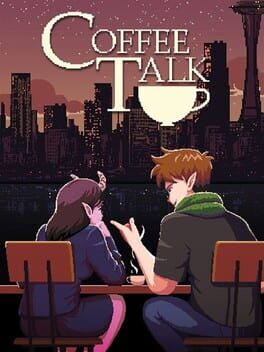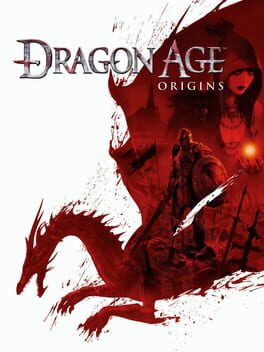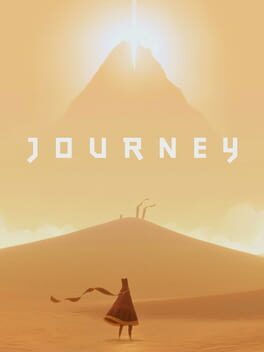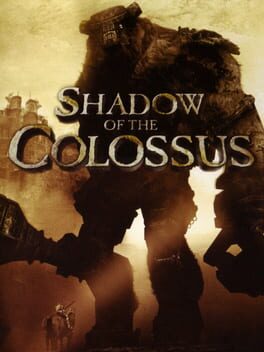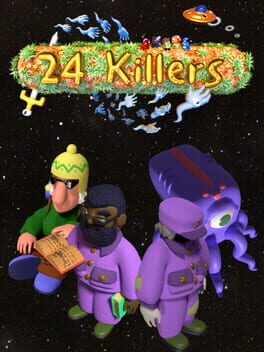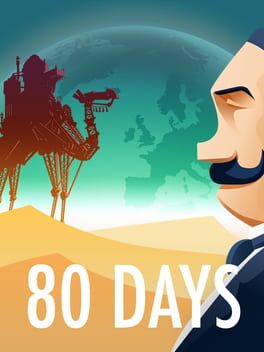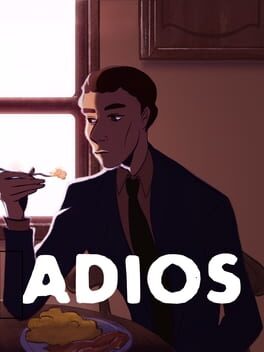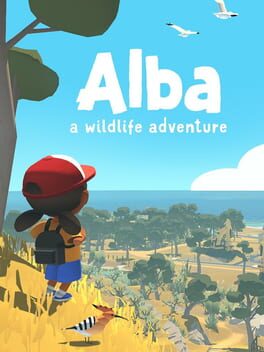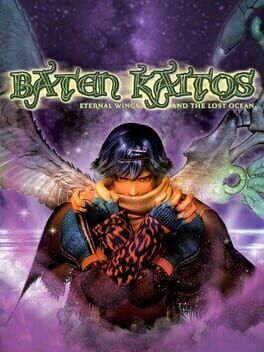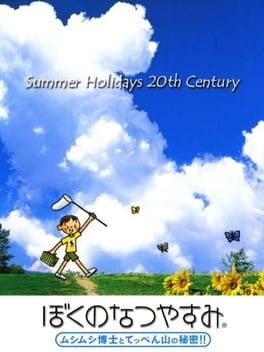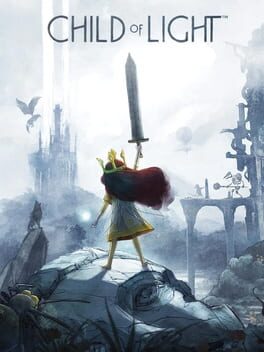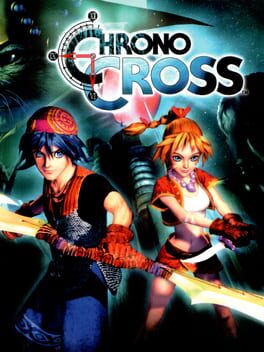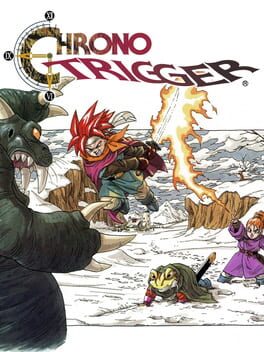itempas
5 reviews liked by itempas
Coffee Talk
2020
A cozy feeling
I have always eyed this VN as I am a fan of coffee….. And cafes so this is very much my ally. As time went on however I just forgot about the game but seeing its sequel make its way to gamepass made me remember. Finally with my memory I could buy the first game on sale and sit down and read this wonderful story.
Short and simple
I will be keeping this review short and simple as there really isn’t a lot to talk about gameplay wise since this is a visual novel. Coffee talk is a Visual Novel that sees you play as a barista who runs a cafe that is only open during the night. The game revolves around the many characters that show up and the stories that follow them. The only gameplay element attached to this game is that you prepare drinks for the customers by combining ingredients to make Coffees , Tea, Green tea, chocolate and milk based drinks. Right off the bat the OST and graphics really put you at ease as the setting is just so peaceful to look at. Combine this with a great cast of characters and very well throughout and thoughtful stories this game is a very good time. I was taken back by some of the dialogue as some of the characters' issues presented are VERY real and the way they go about them are honestly good enough to the point that you can apply what these characters say to real life situations. I really appreciate how deep they get with specific topics that made me nod my head many times in agreement to what characters would say. Weirdly enough however, the only character I wasn’t really fond of is the main recurring character Freya. To explain , I found her dialogue sometimes to be annoying and honestly just found her character to be overall annoying multiple times during certain areas. Maybe her character will grow on me with the sequel so we shall see.
In the end
If you are a Visual novel fan and want to read a well written, thoughtful story with a great OST and great setting AND great characters then I highly recommend this game!. I am looking forward to reading the sequel !!!
I have always eyed this VN as I am a fan of coffee….. And cafes so this is very much my ally. As time went on however I just forgot about the game but seeing its sequel make its way to gamepass made me remember. Finally with my memory I could buy the first game on sale and sit down and read this wonderful story.
Short and simple
I will be keeping this review short and simple as there really isn’t a lot to talk about gameplay wise since this is a visual novel. Coffee talk is a Visual Novel that sees you play as a barista who runs a cafe that is only open during the night. The game revolves around the many characters that show up and the stories that follow them. The only gameplay element attached to this game is that you prepare drinks for the customers by combining ingredients to make Coffees , Tea, Green tea, chocolate and milk based drinks. Right off the bat the OST and graphics really put you at ease as the setting is just so peaceful to look at. Combine this with a great cast of characters and very well throughout and thoughtful stories this game is a very good time. I was taken back by some of the dialogue as some of the characters' issues presented are VERY real and the way they go about them are honestly good enough to the point that you can apply what these characters say to real life situations. I really appreciate how deep they get with specific topics that made me nod my head many times in agreement to what characters would say. Weirdly enough however, the only character I wasn’t really fond of is the main recurring character Freya. To explain , I found her dialogue sometimes to be annoying and honestly just found her character to be overall annoying multiple times during certain areas. Maybe her character will grow on me with the sequel so we shall see.
In the end
If you are a Visual novel fan and want to read a well written, thoughtful story with a great OST and great setting AND great characters then I highly recommend this game!. I am looking forward to reading the sequel !!!
Coffee Talk
2020
Coffee Talk is the kind of game I needed to take a break from my normal video game routine and also try to alleviate some of my gaming fatigue. Sometimes, I just need a relaxing game to get me through the night after a stressful day. During my playthrough, I felt like I was curling up with a good book under a blanket, sipping a warm beverage, zen mode activated. It's been a while since I've felt so at ease while playing a game, so I really appreciated my time with it!
Dragon Age: Origins
2009
Journey
2012
The history behind and outside of Journey it’s almost as enthralling at the game itself; Chris Bell, former producer and designer at ThatGameCompany, has told of the anecdote of the time he got lost in Japan during a trip to the country, and it was the kindness of a woman that, without ex-changing any words and by Bell only showing her a photo, grabbed him by the arm and lead him to its destination. Personal experiences giving new design ideas is nothing rare in the videogame medium or in any form of art as a whole, but it’s clear that this experience stuck with Chris Bell on deep level; he would go on to make Way cooperative online game where two players have to interact and help each other to reach the end without using any words. If this idea sounds oddly familiar… well… makes sense, as it was most likely developed either before or after a game he worked that would release just a year after Way, one that would through the company though a spiral of development hell and complications… and one that would change and inspire so many to go through their own journey.
But I’m getting ahead of myself with the melodramatics (yes, this is going to be one of those), ‘cause when I said the outside history of the game is really interesting, I meant it; Journey was the third game to be developed by ThatGameCompany under their contract with Sony Interactive Studios, it was going to have a 1 year development cycle with a team of merely 7 people and none never really managed to settle on an idea aside of Bell’s concept, Jenova Chen’s direction and that it was going to have some kind of online component, I would love to tell you that development went smooth as butter, but the paper that I got regarding that only said ‘’shit is fucked’’. The team increased from 7 participants to 18, and the expected 1 year development cycle turned into an almost 3 year race against the clock where that company almost had to face absolute financial loss. To say that everyone that had a hand in the game had to face hardship would be an understatement, and Journey had to go through many changes and cuts before it became the final product we know today… but one thing that really struck me as I read interviews and behind the scenes accounts is that, despite the absolute hell and pressure and pain, everyone involved loves Journey, not in a sense that they feel proud in making it after the fact, but rather that the team really wanted to make this game something really special, and it caused them as much pain to see some ideas not be realized (in fact extra hours were CUT both to avoid tensions and so that the money could go to the game itself) as it generated within them a profound happiness to play for themselves they very thing they all worked together to create; and all of this story and knowing all of this background makes it unbelievable to me that the game that we ended up getting is as majestic as it is… and makes it easier to drawn some strange yet beautiful parallelisms with the game itself. While you can throw out names like accomplishment like Chris Bell coming up with the original idea or Jenova Chen’s fantastic direction, I think no one single participant is solely responsible for the game we got, nor the story of Journey seems to be conceived as a parallelism of one person or the team’s feelings at the moment of making it; it’s the accomplishment of a team of a few passionate people that even with misunderstandings and difficulties along the way, worked together for what they thought it was worth making, and funnily enough, I believe it was that search of ideas until something clicked and the cuts so that that the game could release… what would end up making it so beautiful.
Journey is a short and simple voyage across an endless desert, and even if across all of the experience it feels profoundly quiet and humble, it could say to me at the start ‘’Hold on to your seat motherducker, you are about to get journeyed’’ and I wouldn’t complain a bit, like, hell yeah man this is amazing, you earned yourself some arrogance and showing off!... But no, it never does that, Journey, even at its most spectacular and bombastic, it always feels… nice, it feels self-contained and just… striking and pretty. It’s honestly really funny to go from the hopeless and dead wasteland of It Comes in Waves to the constantly changing and colorful dunes of Journey; melancholy is a sentiment present in each ‘’level’’, this constant reminder of something that was once grander than life and prospered now is abandoned and left in ruin, but this sensations meld with the wonder and mystery that each locations inspires; even when it gets scary, this sensation of hopeful adventure and that the end is at hand is ever-present, and it helps that you feel like you are a part of all of this despite you limited available actions. Moving and emitting sounds are your only tools that are always at your disposal, as jumping (or rather, flying) is only granted to you by the flying particles fabric and the strange creatures also seemingly made of the same fabric, and it’s that exact dependance of the environment and your interactions, that necessity of analyzing the ruins that surround you and guessing what to do next while never feeling unnatural or challenging, it what makes it so compelling to explore everything, and it’s what made me submerge in this world, in its sounds and music and in its wordless sad tragedy… well, that’s not entirely true. This is a mountain that can be climb alone, yes… but isn’t it nice to have someone by your side?
Co-op in Journey has little-to-none extrinsic value: at no point there is a puzzle or some kind of platforming challenge that requires two players to complete it, there may be the occasional section where two players might be able to accomplish a task faster than if it was only one, but Journey is so linear in most of its sections than it never really accomplishes anything in the grander scheme thing… and that’s precisely the point. Even going beyond and ignoring the fact that someday Journey will be impossible to play online (even if luckily that fate seems far off from today), at a purely the level, that it’s not the point of this co-op. Other players appear as you advance in your adventure, as if you were encountering other travelers in a long route, and… it feels almost like magic. No words are needed, the only for of communication are the sounds you can emit, and this strange language means nothing… and everything at the same time. The boops that respond to the tooms, the high sounds you can make by maintaining the button pressed that grant the other player energy to fly that almost feel like hugs, and sometimes the sounds aren’t even needed: the kindness of waiting for each other, other players showing you the location of secrets you couldn’t even imagine… You form a connection with people you don’t even know their Steam name until the game is over, let alone talk, and that’s something beyond my wildest imaginations of what a game could ever accomplish, and turns moments that on their own have a ton of impact and emotional charge, into some of the most memorable experiences I have seen in the entirety of the media, and it turns the hopeless into the hopeful.
Journey came out in a time where both players and game journalist seemingly threw their arms up and screamed desperate to prove that videogames were art, when many games had long released and proved it by that time, and while now we turn back upon how we looked at certain games in a different light, not only now I understand how and why Journey was held in such high regards, but also why it inspired an entire generation of games inspired by its ideals and how the game itself is so special. It isn’t the first contemplative game, it isn’t a game that shakes the videogame industry as we know it, it isn’t the definitive proof that games are art… but it a damn good example of it, it’s a fantastic example of how the conditions that both inspire a work and under the ones it’s made can make it so unique and fascinating. Journey is a treasure, one that understandably isn’t everyone’s cup of tea, and people have smarter than me have already sing their praises and problems with it; in that sense, I’m a passerby, one that’s incredibly happy of walking this amazing road and sharing it with the strangers that put a huge smile on my face, and even with the adversities that came before, during and after it, is one I will walk again, I have no doubt about it in the slightest… and hey, I might not have cried, but that didn’t stop from knowing that yeah… that was lovely.
But I’m getting ahead of myself with the melodramatics (yes, this is going to be one of those), ‘cause when I said the outside history of the game is really interesting, I meant it; Journey was the third game to be developed by ThatGameCompany under their contract with Sony Interactive Studios, it was going to have a 1 year development cycle with a team of merely 7 people and none never really managed to settle on an idea aside of Bell’s concept, Jenova Chen’s direction and that it was going to have some kind of online component, I would love to tell you that development went smooth as butter, but the paper that I got regarding that only said ‘’shit is fucked’’. The team increased from 7 participants to 18, and the expected 1 year development cycle turned into an almost 3 year race against the clock where that company almost had to face absolute financial loss. To say that everyone that had a hand in the game had to face hardship would be an understatement, and Journey had to go through many changes and cuts before it became the final product we know today… but one thing that really struck me as I read interviews and behind the scenes accounts is that, despite the absolute hell and pressure and pain, everyone involved loves Journey, not in a sense that they feel proud in making it after the fact, but rather that the team really wanted to make this game something really special, and it caused them as much pain to see some ideas not be realized (in fact extra hours were CUT both to avoid tensions and so that the money could go to the game itself) as it generated within them a profound happiness to play for themselves they very thing they all worked together to create; and all of this story and knowing all of this background makes it unbelievable to me that the game that we ended up getting is as majestic as it is… and makes it easier to drawn some strange yet beautiful parallelisms with the game itself. While you can throw out names like accomplishment like Chris Bell coming up with the original idea or Jenova Chen’s fantastic direction, I think no one single participant is solely responsible for the game we got, nor the story of Journey seems to be conceived as a parallelism of one person or the team’s feelings at the moment of making it; it’s the accomplishment of a team of a few passionate people that even with misunderstandings and difficulties along the way, worked together for what they thought it was worth making, and funnily enough, I believe it was that search of ideas until something clicked and the cuts so that that the game could release… what would end up making it so beautiful.
Journey is a short and simple voyage across an endless desert, and even if across all of the experience it feels profoundly quiet and humble, it could say to me at the start ‘’Hold on to your seat motherducker, you are about to get journeyed’’ and I wouldn’t complain a bit, like, hell yeah man this is amazing, you earned yourself some arrogance and showing off!... But no, it never does that, Journey, even at its most spectacular and bombastic, it always feels… nice, it feels self-contained and just… striking and pretty. It’s honestly really funny to go from the hopeless and dead wasteland of It Comes in Waves to the constantly changing and colorful dunes of Journey; melancholy is a sentiment present in each ‘’level’’, this constant reminder of something that was once grander than life and prospered now is abandoned and left in ruin, but this sensations meld with the wonder and mystery that each locations inspires; even when it gets scary, this sensation of hopeful adventure and that the end is at hand is ever-present, and it helps that you feel like you are a part of all of this despite you limited available actions. Moving and emitting sounds are your only tools that are always at your disposal, as jumping (or rather, flying) is only granted to you by the flying particles fabric and the strange creatures also seemingly made of the same fabric, and it’s that exact dependance of the environment and your interactions, that necessity of analyzing the ruins that surround you and guessing what to do next while never feeling unnatural or challenging, it what makes it so compelling to explore everything, and it’s what made me submerge in this world, in its sounds and music and in its wordless sad tragedy… well, that’s not entirely true. This is a mountain that can be climb alone, yes… but isn’t it nice to have someone by your side?
Co-op in Journey has little-to-none extrinsic value: at no point there is a puzzle or some kind of platforming challenge that requires two players to complete it, there may be the occasional section where two players might be able to accomplish a task faster than if it was only one, but Journey is so linear in most of its sections than it never really accomplishes anything in the grander scheme thing… and that’s precisely the point. Even going beyond and ignoring the fact that someday Journey will be impossible to play online (even if luckily that fate seems far off from today), at a purely the level, that it’s not the point of this co-op. Other players appear as you advance in your adventure, as if you were encountering other travelers in a long route, and… it feels almost like magic. No words are needed, the only for of communication are the sounds you can emit, and this strange language means nothing… and everything at the same time. The boops that respond to the tooms, the high sounds you can make by maintaining the button pressed that grant the other player energy to fly that almost feel like hugs, and sometimes the sounds aren’t even needed: the kindness of waiting for each other, other players showing you the location of secrets you couldn’t even imagine… You form a connection with people you don’t even know their Steam name until the game is over, let alone talk, and that’s something beyond my wildest imaginations of what a game could ever accomplish, and turns moments that on their own have a ton of impact and emotional charge, into some of the most memorable experiences I have seen in the entirety of the media, and it turns the hopeless into the hopeful.
Journey came out in a time where both players and game journalist seemingly threw their arms up and screamed desperate to prove that videogames were art, when many games had long released and proved it by that time, and while now we turn back upon how we looked at certain games in a different light, not only now I understand how and why Journey was held in such high regards, but also why it inspired an entire generation of games inspired by its ideals and how the game itself is so special. It isn’t the first contemplative game, it isn’t a game that shakes the videogame industry as we know it, it isn’t the definitive proof that games are art… but it a damn good example of it, it’s a fantastic example of how the conditions that both inspire a work and under the ones it’s made can make it so unique and fascinating. Journey is a treasure, one that understandably isn’t everyone’s cup of tea, and people have smarter than me have already sing their praises and problems with it; in that sense, I’m a passerby, one that’s incredibly happy of walking this amazing road and sharing it with the strangers that put a huge smile on my face, and even with the adversities that came before, during and after it, is one I will walk again, I have no doubt about it in the slightest… and hey, I might not have cried, but that didn’t stop from knowing that yeah… that was lovely.
The following write-up can be considered both an addendum to my spoiler-heavy thoughts upon last year’s replay of Shadow of the Colossus as well as an expansion of my blurb from Pangburn’s “Sight and Sound” Backloggd-canon project. I can’t give him enough credit for his work and giving me the opportunity to contribute in my own little way.
If someone were to ask me what I’d consider to be the greatest game of all time, Shadow of the Colossus would most likely not be my first answer. I’d probably point you to a few candidates that not only elevated the medium, but were also titles that I’d consider practically perfect with no major blemishes: perhaps something like Super Metroid, Chrono Trigger, or most recently, the original Resident Evil remake. That said, Shadow of the Colossus stands above all of these games in my heart, because despite any gripes, I would argue that practically all of these potential “weaknesses” contribute to the final artistic vision. Somehow, it transcends my definition of a perfect video game, and becomes something much more.
It'd be easy to characterize Shadow of the Colossus as a boss-rush with puzzle elements, but I find that this description misses the point. Trying to classify Shadow of the Colossus as “yet another boss-rush” would be like trying to classify Ico as “yet another puzzle-platformer;” perhaps it would be more accurate to describe both as cases where gameplay, as the vessel for storytelling, happens to be a series of boss fights for Shadow of the Colossus or a series of puzzle-platforming segments for Ico. Fumito Ueda himself claims that “They're not bosses… they’re more like inverted Zelda dungeons.” Labeling the colossi as nothing more than bosses would be doing a disservice to the layers of history that these colossi represent, these storied and often majestic creatures rudely awakened by a complete outsider. Moreover, transforming traversable dungeons into responsive boss encounters breathes life into the experience. You’re not just traversing this static, emotionless backdrop; you’re scaling this moving, living being that knows you’re trying to snuff out its existence, an end to justify the means of cruelty. The colossi serve more than just checkpoints at the end of sequences: they become the sequences, their identities firmly embedded within the few minutes spent observing, climbing, and slaying them up-close as they struggle to persist in the inevitability of the ritual. It lends this whole ordeal a layer of intimacy that simply wasn’t found in many action-adventure games of the time.
For this reason, I also think that trying to compare Shadow of the Colossus’ limited controls to other action-adventure titles of the time is ultimately a fool’s errand. This is not your typical power fantasy by any means; this is the classic tale of David vs Goliath, told sixteen times with various degrees of ambiguity. Despite the fantastical nature of your surroundings, Ueda sought to preserve a strong degree of realism to better capture the gravity of the player's actions. Wander is no glorious action superstar: his quest to slay the colossi regardless of whatever price must be paid reeks of desperation. It’s why his movement speed and jump feel so constrained, and why his sword thrusts feel sluggish at times. There’s a certain weight behind all his actions despite any pullback, and it fits perfectly alongside the sheer size and awe of the colossi. Their ability to swat Wander about like a flea, or send him flying just from a simple stomp, or even how Wander is bucked to and fro from simply trying to stay standing atop shaking colossi conveys fragility better than any spoken or written language ever could. Even the pain experienced by the player from tightly gripping upon the controller, just as Wander tightly clasps onto the colossi’s fur for dear life, plays right into the sheer tension of the encounter: it’s one of the purest expressions of controls as the extension of the body, just taken in the traditionally opposite direction to lend a sense of commitment behind every action taken in the moment.
What I think stumps traditional audiences, is that Shadow of the Colossus is a game that often makes you doubt yourself. It’s easy to lose faith against this hulking behemoth staring you right in the face that could sneeze on you and send you careening several feet away. Couple that with the thumping drums and clashing chords of tracks like Grotesque Figures and Liberated Guardian alongside overcast and dismal settings, and it’s no wonder that the player often feels disempowered. But that doesn’t mean you can’t turn the tides of battle. In fact, Shadow of the Colossus is a game that doesn’t simply coax adaptation, but rather, demands it through emergent solutions. When making mistakes can end up chipping away half your health bar or falling off the colossi entirely to restart preparation and climbing sequences that can take valuable minutes, every decision matters that much more. With Wander’s limited set of controls and tools (jump, climb, a dodge-roll, Agro, and your sword + bow and arrow), every factor in the environment must be considered… and Team Ico pulls this off effortlessly because not a single detail goes to waste. Anything even remotely distinct within the vicinity, including the bodies of the colossi themselves, are most likely a piece of the puzzle required to scale and discover any weaknesses. Moreover, the game keeps you on your feet despite maintaining its core design principles by varying practically every aspect of the colossi designs (including size, which affects their speed) as well as their respective environments, with few discernable patterns in the overall sequence, forcing players to reexamine their surroundings with every new encounter. In that sense, combat is laborious, but calculated: observation is often required to coax interactions that can get Wander into favorable positions, as the colossi AI follow sensible patterns that must be proc’d with specific player responses (i.e. shooting a colossi with an arrow will immediately draw their attention). The other half of the battle is maintaining patience and not losing your composure in the heat of the moment. As the frame rate buckles from the colossi consuming your screen space and the camera flies wildly about, conveying your character’s sheer difference in size so innately, you have to make quick judgement calls on how to preserve what little remains of your dwindling grip gauge through careful positioning (via plants and figuring out the best times & locations to let go and stand still) while never losing sight of your target. Through player perseverance, the fight reaches its climax with valuable player feedback in the form of impactful sword stabs and the triumphant horns of Revived Power. While some would complain that the game never lets you linger in celebration and in fact often leaves you exhausted, I would argue that experiencing that complex, emotional rush is a reward in itself. It is a game that is more than happy to beat you down and leave you feeling insignificant, yet never makes the task outright impossible, and its ability to evoke a variety of emotions while consistently challenging your perceptions is perhaps its most understated strength.
Speaking of challenging perceptions, one frequent complaint is that Shadow of the Colossus’ overworld is empty, with limited meaningful interaction. I reject this assertation that this feature is a weakness, because scattering collectibles and side-quests about the world would defeat the intended purpose of creating a “more realistic feeling of presence.” I also see a lot of players calling it an “open-world” title, and I think this descriptor is slightly misleading; the overworld simply exists to create time and space between each of the intense colossi encounters, and better convey the game’s sense of scale, rather than function as a simulated environment that lets players approach different objectives as they wish. Emptying the overworld of features outside of save shrines and the rare blue-tailed lizard/fruit while silencing the soundtrack (leaving only environmental noises and your horse’s gallop) allows Team ICO to centralize on the act of traversal itself as a form of meditative self-reflection while carefully zooming out and panning the camera to fully display the vastness of the forbidden land, further emphasizing the enormity of this alien world and situation that the wanderer cannot even begin to understand. As an extension of Ico’s core design philosophy of “design by subtraction,” Team Ico sought to remove any element that would distract from the central focus, such as “optional” colossi and excess NPCs. The latter was instead replaced with the sword’s light-beam locator, lending the lighting duality as both a contributing factor of ambience and a gameplay mechanic. As a result, I never did really understand why these long riding sections were often written off by so many; these segments provide a necessary catharsis for players to soak in the subtlety of everything happening around them while discreetly serving as a reminder that there was no place for them on this forsaken earth.
To be fair, it is slightly misleading referring to the player character as a lone wanderer when Ueda heavily stresses the relationship between Wander and his horse, Agro, a detail that often gets overlooked when players bring up the “poor horse controls.” An important distinction that must be made here is that you are not controlling Agro; you are controlling Wander, who is controlling Agro. Realism is again the focus: there’s a natural response time between Wander manipulating the reins and Agro’s subsequent shift in speed. Additionally, this more firmly establishes Agro’s distinct identity within the game, as she has her own AI-movement enabled algorithms that will allow her to proactively avoid danger and return to Wander even without the usual stimulus of Wander calling out. Want further proof of this in action? Try riding Agro over one of the land-bridges or through one of the world’s many forests, and take your thumb off of the left joystick; Agro will naturally steer herself forward and avoid any obstacle or ledge in the way whenever possible. As a result, players have to learn to trust Agro during more-involved riding sections, because attempting to exert too much control will lead to the player fighting the natural horse steering and getting more frequently stuck on geometry; as Ueda himself pointed out, this scheme was based off of the idea that a horse was both a “friend” and a “self-supporting vehicle.” This becomes especially paramount during certain fights where the player must aim and fire the bow and arrow while riding Agro to dodge attacks; these two actions both use the left joystick, and simultaneously juggling the two activities would become nigh on impossible if the player refused to lend Agro any agency during these encounters.
Finally, I’d like to address potential gripes that others may have regarding the storytelling of Shadow of the Colossus. Mind you, I’m not referring to the actual storyline or any particular interpretation of the narrative: I instead want to focus on the act of the storytelling itself. While I’ve heard from friends that the lengthy cutscenes setting up and closing out the game are not ideal, I personally do not believe that these interfere with the game’s pacing in any fashion. Not only do they serve as bookends that do not impact the core experience of switching between riding and scaling colossi, the ending cutscene also serves as a fantastic emotional denouement (during the credits, no less) tying all of your actions together as a nostalgic send-off to further reflect upon your time spent. The short cutscenes in-between the action, on the other hand, keep the player anticipating their next encounter while painting over the deaths of the colossi with the moral ambiguity that would come to characterize Shadow of the Colossus, all with practically no dialogue outside of these moments. It’s also important to note at this time that player control is not completely missing during these segments, because you can still manipulate the camera to some degree during cutscenes to maintain the impression of controllability. This seems to align with Ueda’s beliefs regarding interactivity, for with regards to possible interpretations of the story, Ueda had this to say: “I want them to direct the story themselves.” In this sense, Shadow of the Colossus’ limited storytelling and ambiguous themes make perfect sense, for rather than being a game constructed around a story, it is a story constructed around a game.
To close this off, I want to reiterate that Shadow of the Colossus is by no means flawless. Certain colossi fights take a bit more patience than others due to occasionally stubborn behaviors, rare but sudden frame rate drops in the overworld feel quite unwelcome, and I do have to admit that the fruits and blue-tailed lizards could be eliminated altogether with little consequence to the player. Regardless, many of Shadow of the Colossus’ foibles lend the overall experience a stronger sense of identity in how they meld emergent gameplay with understated storytelling, and are at worse, fairly understandable given how the game was so markedly ahead of its time. Having now completed my third playthrough, I do not believe that Shadow of the Colossus is in any way worthy of the descriptors “aged” or “outdated.” While it does require me to meet it on its own terms, its various innovations and design choices make complete sense once given the context of its scope, and its ability to "tackle any obstacles to building that empathy" remains practically unmatched. Shadow of the Colossus was exactly what it needed to be and accomplished exactly what it sought out to do in the time it was made, and to this day, remains a triumph for the medium with its ambitious yet realized integration of visuals and interaction.
If my thoughts seem somewhat pointed, I promise that this was not written with such intentions. I absolutely understand why others may become alienated or be afraid of everything that it represents; by its very nature, Shadow of the Colossus is a game that doesn’t have something for everyone. Perhaps that is what makes it so compelling to me: because there’s a real element of danger involved. It still feels like a miracle that something so blindingly unconventional yet so realized and unmistakably human and empathetic ever came to fruition in the first place, further challenging contemporary conventions in an era where well-known game developers had already pushed so far in their experimentation. Regardless of whether or not I’ve reached you, my message remains the same: throw away your expectations, and see for yourself what Fumito Ueda created all these years ago. Don’t worry if it’s not your thing; while it genuinely gives me no pleasure to see others struggle with my favorite game, I’ll still be proud that you gave it a fair shot. I only wish that everyone could see what I see in Shadow of the Colossus.
If someone were to ask me what I’d consider to be the greatest game of all time, Shadow of the Colossus would most likely not be my first answer. I’d probably point you to a few candidates that not only elevated the medium, but were also titles that I’d consider practically perfect with no major blemishes: perhaps something like Super Metroid, Chrono Trigger, or most recently, the original Resident Evil remake. That said, Shadow of the Colossus stands above all of these games in my heart, because despite any gripes, I would argue that practically all of these potential “weaknesses” contribute to the final artistic vision. Somehow, it transcends my definition of a perfect video game, and becomes something much more.
It'd be easy to characterize Shadow of the Colossus as a boss-rush with puzzle elements, but I find that this description misses the point. Trying to classify Shadow of the Colossus as “yet another boss-rush” would be like trying to classify Ico as “yet another puzzle-platformer;” perhaps it would be more accurate to describe both as cases where gameplay, as the vessel for storytelling, happens to be a series of boss fights for Shadow of the Colossus or a series of puzzle-platforming segments for Ico. Fumito Ueda himself claims that “They're not bosses… they’re more like inverted Zelda dungeons.” Labeling the colossi as nothing more than bosses would be doing a disservice to the layers of history that these colossi represent, these storied and often majestic creatures rudely awakened by a complete outsider. Moreover, transforming traversable dungeons into responsive boss encounters breathes life into the experience. You’re not just traversing this static, emotionless backdrop; you’re scaling this moving, living being that knows you’re trying to snuff out its existence, an end to justify the means of cruelty. The colossi serve more than just checkpoints at the end of sequences: they become the sequences, their identities firmly embedded within the few minutes spent observing, climbing, and slaying them up-close as they struggle to persist in the inevitability of the ritual. It lends this whole ordeal a layer of intimacy that simply wasn’t found in many action-adventure games of the time.
For this reason, I also think that trying to compare Shadow of the Colossus’ limited controls to other action-adventure titles of the time is ultimately a fool’s errand. This is not your typical power fantasy by any means; this is the classic tale of David vs Goliath, told sixteen times with various degrees of ambiguity. Despite the fantastical nature of your surroundings, Ueda sought to preserve a strong degree of realism to better capture the gravity of the player's actions. Wander is no glorious action superstar: his quest to slay the colossi regardless of whatever price must be paid reeks of desperation. It’s why his movement speed and jump feel so constrained, and why his sword thrusts feel sluggish at times. There’s a certain weight behind all his actions despite any pullback, and it fits perfectly alongside the sheer size and awe of the colossi. Their ability to swat Wander about like a flea, or send him flying just from a simple stomp, or even how Wander is bucked to and fro from simply trying to stay standing atop shaking colossi conveys fragility better than any spoken or written language ever could. Even the pain experienced by the player from tightly gripping upon the controller, just as Wander tightly clasps onto the colossi’s fur for dear life, plays right into the sheer tension of the encounter: it’s one of the purest expressions of controls as the extension of the body, just taken in the traditionally opposite direction to lend a sense of commitment behind every action taken in the moment.
What I think stumps traditional audiences, is that Shadow of the Colossus is a game that often makes you doubt yourself. It’s easy to lose faith against this hulking behemoth staring you right in the face that could sneeze on you and send you careening several feet away. Couple that with the thumping drums and clashing chords of tracks like Grotesque Figures and Liberated Guardian alongside overcast and dismal settings, and it’s no wonder that the player often feels disempowered. But that doesn’t mean you can’t turn the tides of battle. In fact, Shadow of the Colossus is a game that doesn’t simply coax adaptation, but rather, demands it through emergent solutions. When making mistakes can end up chipping away half your health bar or falling off the colossi entirely to restart preparation and climbing sequences that can take valuable minutes, every decision matters that much more. With Wander’s limited set of controls and tools (jump, climb, a dodge-roll, Agro, and your sword + bow and arrow), every factor in the environment must be considered… and Team Ico pulls this off effortlessly because not a single detail goes to waste. Anything even remotely distinct within the vicinity, including the bodies of the colossi themselves, are most likely a piece of the puzzle required to scale and discover any weaknesses. Moreover, the game keeps you on your feet despite maintaining its core design principles by varying practically every aspect of the colossi designs (including size, which affects their speed) as well as their respective environments, with few discernable patterns in the overall sequence, forcing players to reexamine their surroundings with every new encounter. In that sense, combat is laborious, but calculated: observation is often required to coax interactions that can get Wander into favorable positions, as the colossi AI follow sensible patterns that must be proc’d with specific player responses (i.e. shooting a colossi with an arrow will immediately draw their attention). The other half of the battle is maintaining patience and not losing your composure in the heat of the moment. As the frame rate buckles from the colossi consuming your screen space and the camera flies wildly about, conveying your character’s sheer difference in size so innately, you have to make quick judgement calls on how to preserve what little remains of your dwindling grip gauge through careful positioning (via plants and figuring out the best times & locations to let go and stand still) while never losing sight of your target. Through player perseverance, the fight reaches its climax with valuable player feedback in the form of impactful sword stabs and the triumphant horns of Revived Power. While some would complain that the game never lets you linger in celebration and in fact often leaves you exhausted, I would argue that experiencing that complex, emotional rush is a reward in itself. It is a game that is more than happy to beat you down and leave you feeling insignificant, yet never makes the task outright impossible, and its ability to evoke a variety of emotions while consistently challenging your perceptions is perhaps its most understated strength.
Speaking of challenging perceptions, one frequent complaint is that Shadow of the Colossus’ overworld is empty, with limited meaningful interaction. I reject this assertation that this feature is a weakness, because scattering collectibles and side-quests about the world would defeat the intended purpose of creating a “more realistic feeling of presence.” I also see a lot of players calling it an “open-world” title, and I think this descriptor is slightly misleading; the overworld simply exists to create time and space between each of the intense colossi encounters, and better convey the game’s sense of scale, rather than function as a simulated environment that lets players approach different objectives as they wish. Emptying the overworld of features outside of save shrines and the rare blue-tailed lizard/fruit while silencing the soundtrack (leaving only environmental noises and your horse’s gallop) allows Team ICO to centralize on the act of traversal itself as a form of meditative self-reflection while carefully zooming out and panning the camera to fully display the vastness of the forbidden land, further emphasizing the enormity of this alien world and situation that the wanderer cannot even begin to understand. As an extension of Ico’s core design philosophy of “design by subtraction,” Team Ico sought to remove any element that would distract from the central focus, such as “optional” colossi and excess NPCs. The latter was instead replaced with the sword’s light-beam locator, lending the lighting duality as both a contributing factor of ambience and a gameplay mechanic. As a result, I never did really understand why these long riding sections were often written off by so many; these segments provide a necessary catharsis for players to soak in the subtlety of everything happening around them while discreetly serving as a reminder that there was no place for them on this forsaken earth.
To be fair, it is slightly misleading referring to the player character as a lone wanderer when Ueda heavily stresses the relationship between Wander and his horse, Agro, a detail that often gets overlooked when players bring up the “poor horse controls.” An important distinction that must be made here is that you are not controlling Agro; you are controlling Wander, who is controlling Agro. Realism is again the focus: there’s a natural response time between Wander manipulating the reins and Agro’s subsequent shift in speed. Additionally, this more firmly establishes Agro’s distinct identity within the game, as she has her own AI-movement enabled algorithms that will allow her to proactively avoid danger and return to Wander even without the usual stimulus of Wander calling out. Want further proof of this in action? Try riding Agro over one of the land-bridges or through one of the world’s many forests, and take your thumb off of the left joystick; Agro will naturally steer herself forward and avoid any obstacle or ledge in the way whenever possible. As a result, players have to learn to trust Agro during more-involved riding sections, because attempting to exert too much control will lead to the player fighting the natural horse steering and getting more frequently stuck on geometry; as Ueda himself pointed out, this scheme was based off of the idea that a horse was both a “friend” and a “self-supporting vehicle.” This becomes especially paramount during certain fights where the player must aim and fire the bow and arrow while riding Agro to dodge attacks; these two actions both use the left joystick, and simultaneously juggling the two activities would become nigh on impossible if the player refused to lend Agro any agency during these encounters.
Finally, I’d like to address potential gripes that others may have regarding the storytelling of Shadow of the Colossus. Mind you, I’m not referring to the actual storyline or any particular interpretation of the narrative: I instead want to focus on the act of the storytelling itself. While I’ve heard from friends that the lengthy cutscenes setting up and closing out the game are not ideal, I personally do not believe that these interfere with the game’s pacing in any fashion. Not only do they serve as bookends that do not impact the core experience of switching between riding and scaling colossi, the ending cutscene also serves as a fantastic emotional denouement (during the credits, no less) tying all of your actions together as a nostalgic send-off to further reflect upon your time spent. The short cutscenes in-between the action, on the other hand, keep the player anticipating their next encounter while painting over the deaths of the colossi with the moral ambiguity that would come to characterize Shadow of the Colossus, all with practically no dialogue outside of these moments. It’s also important to note at this time that player control is not completely missing during these segments, because you can still manipulate the camera to some degree during cutscenes to maintain the impression of controllability. This seems to align with Ueda’s beliefs regarding interactivity, for with regards to possible interpretations of the story, Ueda had this to say: “I want them to direct the story themselves.” In this sense, Shadow of the Colossus’ limited storytelling and ambiguous themes make perfect sense, for rather than being a game constructed around a story, it is a story constructed around a game.
To close this off, I want to reiterate that Shadow of the Colossus is by no means flawless. Certain colossi fights take a bit more patience than others due to occasionally stubborn behaviors, rare but sudden frame rate drops in the overworld feel quite unwelcome, and I do have to admit that the fruits and blue-tailed lizards could be eliminated altogether with little consequence to the player. Regardless, many of Shadow of the Colossus’ foibles lend the overall experience a stronger sense of identity in how they meld emergent gameplay with understated storytelling, and are at worse, fairly understandable given how the game was so markedly ahead of its time. Having now completed my third playthrough, I do not believe that Shadow of the Colossus is in any way worthy of the descriptors “aged” or “outdated.” While it does require me to meet it on its own terms, its various innovations and design choices make complete sense once given the context of its scope, and its ability to "tackle any obstacles to building that empathy" remains practically unmatched. Shadow of the Colossus was exactly what it needed to be and accomplished exactly what it sought out to do in the time it was made, and to this day, remains a triumph for the medium with its ambitious yet realized integration of visuals and interaction.
If my thoughts seem somewhat pointed, I promise that this was not written with such intentions. I absolutely understand why others may become alienated or be afraid of everything that it represents; by its very nature, Shadow of the Colossus is a game that doesn’t have something for everyone. Perhaps that is what makes it so compelling to me: because there’s a real element of danger involved. It still feels like a miracle that something so blindingly unconventional yet so realized and unmistakably human and empathetic ever came to fruition in the first place, further challenging contemporary conventions in an era where well-known game developers had already pushed so far in their experimentation. Regardless of whether or not I’ve reached you, my message remains the same: throw away your expectations, and see for yourself what Fumito Ueda created all these years ago. Don’t worry if it’s not your thing; while it genuinely gives me no pleasure to see others struggle with my favorite game, I’ll still be proud that you gave it a fair shot. I only wish that everyone could see what I see in Shadow of the Colossus.
